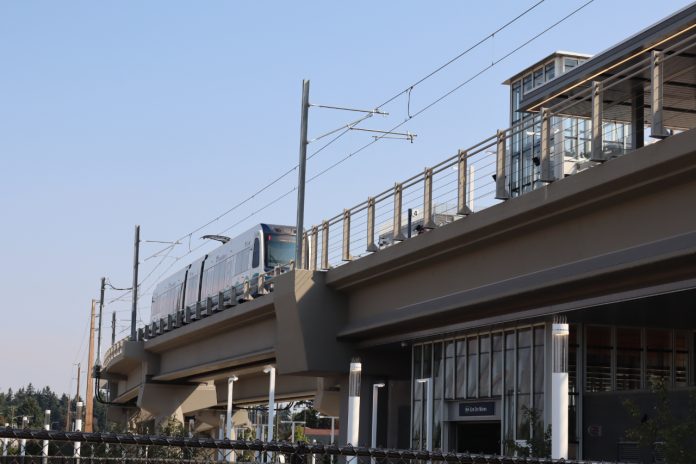
Light rail riders will be able to take 1 Line trains as far south as Federal Way starting December 6th, Sound Transit announced Thursday. The three-station extension will be the agency’s last expansion to the south until the Tacoma Dome extension slated for 2035. In addition to the “Federal Way Downtown” terminus, the extension adds stops at Kent Des Moines Road (near Highline College) and at Star Lake.
The 7.8-mile extension will take the 1 Line to 41 miles in total length from Federal Way Downtown to Lynnwood City Center, completing the 1 Line vision funded in the Sound Transit 2 ballot measure, which was approved in 2008. Subsequently, the Sound Transit 3 measure expanded upon that vision after earning voter approval in 2016.
“Today’s announcement on Federal Way shows that the region continues to make significant progress toward our mass transit goals,” said Sound Transit Board Chair and Snohomish County Executive Dave Somers. “This is one more step in completing the spine and providing relief from gridlock and more travel options for our residents. I look forward to the day we open Everett, and Tacoma, and the other key elements of the Sound Transit 3 package.”
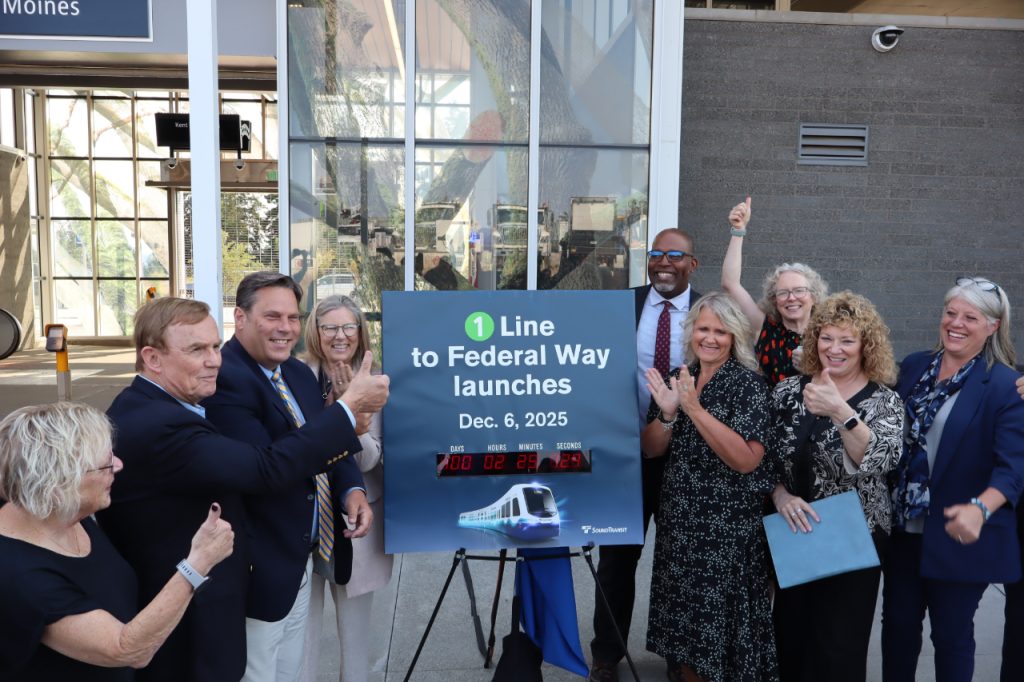
An opening for Federal Way had been scheduled for next year, after Sound Transit connected the existing 2 Line on the Eastside across Lake Washington to Seattle and up to Lynnwood. But with testing on the I-90 bridge segment continuing to be delayed, Sound Transit was able to rearrange the order of operations when it looked like Federal Way would be ready sooner.
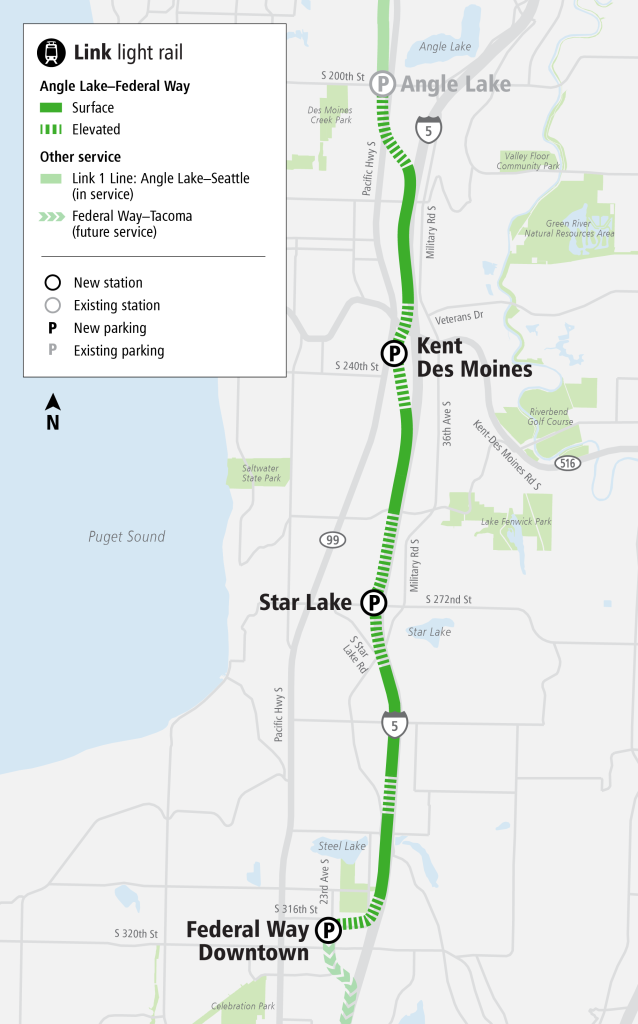
The agency remains optimistic that it can open the full 2 Line by next spring, ahead of the 2026 FIFA Men’s World Cup. As a host city, Seattle is expecting to see travel demand spike across its regional transportation network.
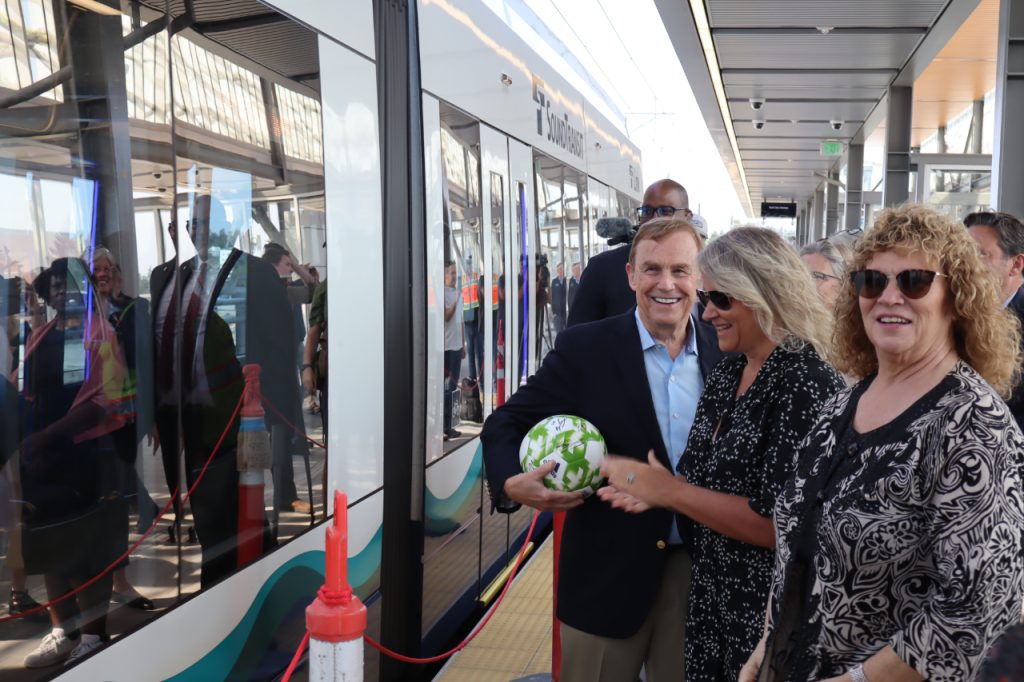
Mudslide delays
Like the I-90 segment, getting to Federal Way required some technical ingenuity and last-minute adjustments on Sound Transit’s part. As recently as the summer of 2022, the agency had been expecting to open the Federal Way Link Extension in 2024. However, a major issue with unstable soils in Kent emerged via a mudslide that summer, which caused the agency to overhaul plans and delay that timeline.
“On July 19, approximately 200 linear feet of embankment slid downslope by approximately nine feet, requiring a roughly three-day precautionary lane closure on southbound I-5,” Sound Transit spokesperson John Gallagher said in a 2022 press release. “The slope has been temporarily stabilized, and Sound Transit and its design-build contractor are working with the Washington State Department of Transportation on permanent design solutions that will address a liquifiable layer of soil that has been identified fairly deep below the light rail alignment. Work to identify solutions will remain focused on minimizing delay to the project.”
To overcome the soupy soils and earthquake liquefaction risk, Sound Transit added a cantilever bridge span over the problem section near the McSorely Creek Wetland.
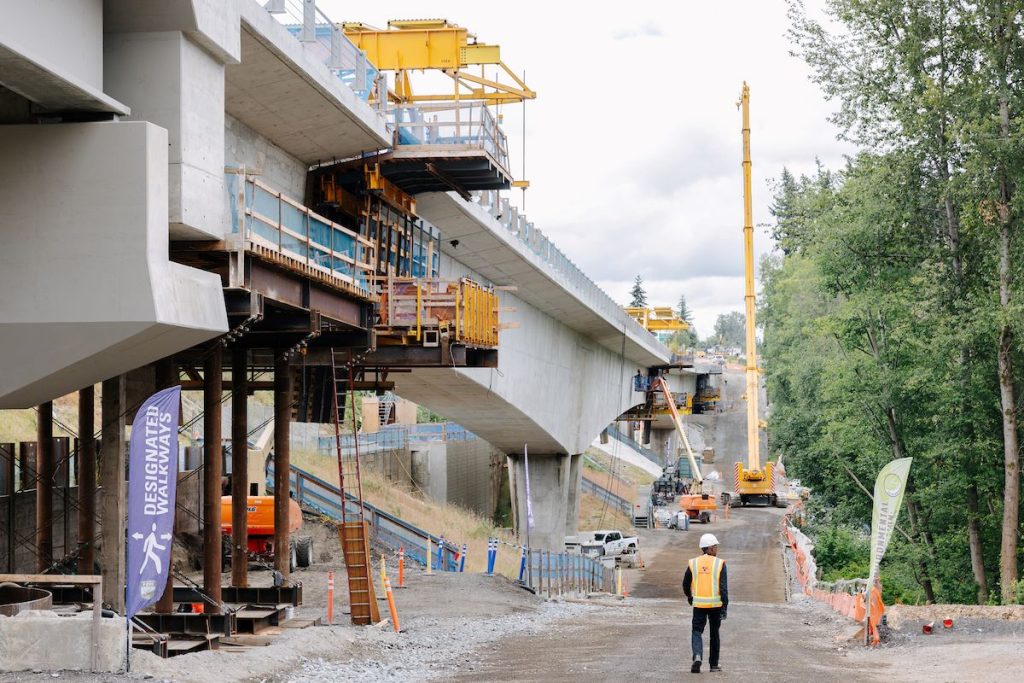
The last-minute bridge addition was able to come together relatively quickly, clearing the way for the project opening this December. Sound Transit reported solid progress on Federal Way Link this summer, but at the time only went as far as pledging an early 2026 opening.
Federal Way Link leapfrogging the westward 2 Line connection will present challenges for operations in the interim period. Sound Transit’s second light rail operations base is in Bellevue’s Spring District. Without the Lake Washington crossing, the 1 Line’s lacks access to the trains stored at the Bellevue base, which had been integral to its ultimate operational plan. As a result, the agency will likely be counting on keeping in service nearly all of its trains stored at its central base in SoDo to meet peak frequencies.
Once the 2 Line is complete, operating a 62-mile light rail network will continue to be a challenge for Sound Transit. Recently, the agency has pondered projects to improve operational flexibility — some of which had been deferred to cut costs. Staff have also indicated the agency likely underestimated how many trains it will need to maintain promised peak headways.
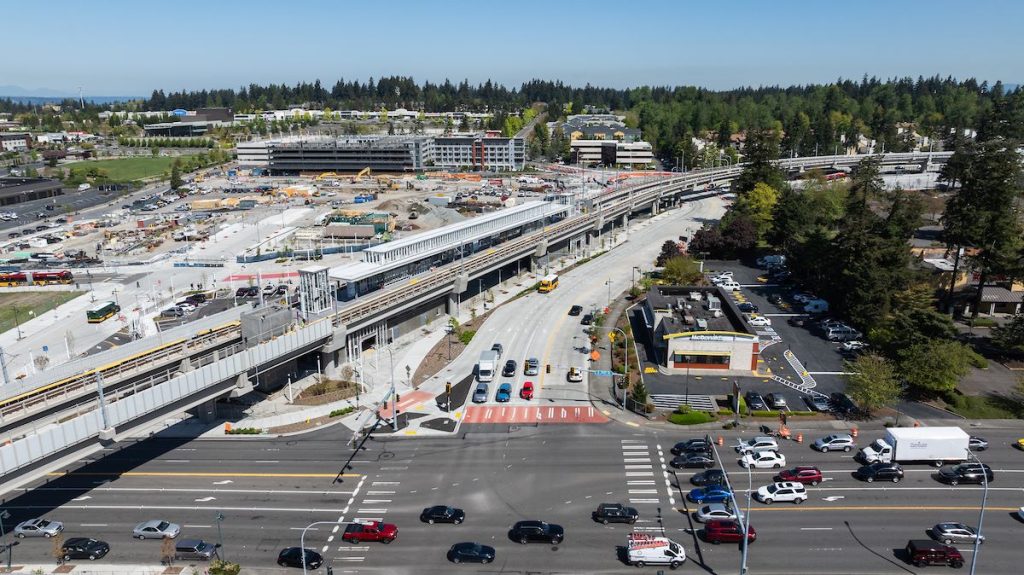
Future headaches aside, moving up the Federal Way opening is likely to be a relief to riders who were itching to see long-promised expansions completed.
Federal Way Link housing plans
For now, all three station areas are decidedly suburban in character and oriented around park-and-ride facilities. However, Federal Way has made some efforts toward urbanizing around its Federal Way Downtown station. In 2024, the City approved a phased development agreement that could ultimately bring 1,600 homes to a city-owned site near the station, perhaps serving as a catalyst for further redevelopment.
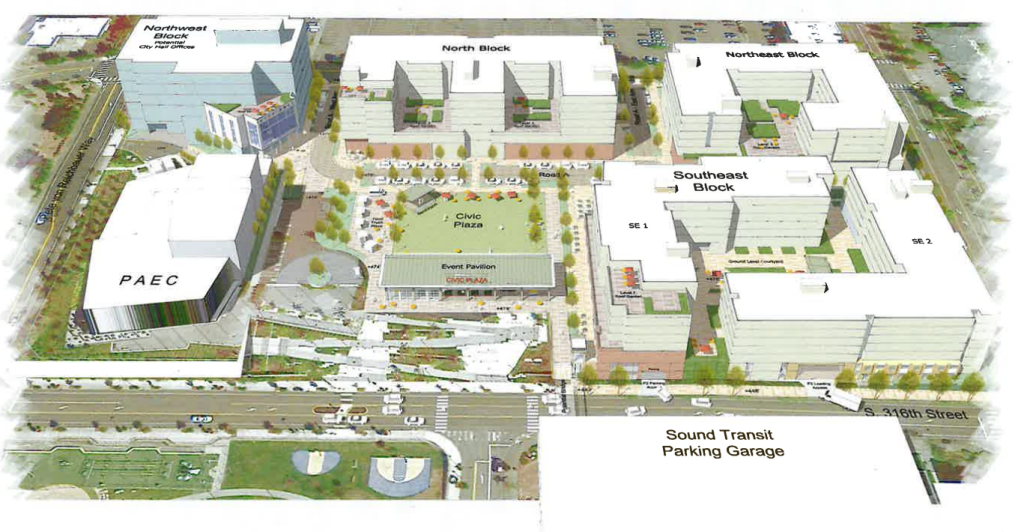
A catalyst could be needed to spur some momentum, as Federal Way’s growth has been well below the regional average in recent years. A city of about 103,000, Federal Way added just 1,200 residents over the last four years, while Redmond (also a recent light rail addition) added nearly 8,500, according to state estimates. The City of Federal Way’s high impact fees targeting new multifamily homes likely are not helping, but they will need to be revised due to a change in state law.
Star Lake meanwhile is bordered by Federal Way to the southwest, Kent to the north, and the unincorporated community of Lakeland North to the southeast. The station is sandwiched between a green belt and a freeway, but may find riders from the apartment complex to the south. The eastern side of I-5 is mostly single family homes.
Redevelopment opportunities near Kent Des Moines Station are similarly limited by the presence of I-5 and Pacific Highway, a major obstacle to people walking, rolling, and biking in its own right. Nonetheless, Sound Transit did create two transit-oriented development (TOD) opportunities on agency-owned construction staging sites near the station. On the north TOD site, Sound Transit has signed an agreement with nonprofit builder Mercy Housing Northwest to construct at least 175 affordable homes.
Getting to light rail stations before they're actually open is always a learning experience. RapidRide A stops across the street from Kent Des Moines Station, but it's a ten minute walk thanks to Pac Highway. And then the signal across the highway didn't even change for me. Lots of parking though
— Ryan Packer (@typewriteralley.bsky.social) August 28, 2025 at 10:06 AM
[image or embed]
On the south TOD site, the Sound Transit Board of Directors had hoped to attract for-profit builder interest to create a mixed-income mixed-use development. That plan fell through. “Sound Transit did not receive proposals sufficiently meeting the RFP criteria,” the project website noted. “Agency staff will continue working with the City of Kent and the Sound Transit Board on next steps.”
On the eastern side of I-5, a series of large apartment complexes did manage to sprout along Veterans Drive. Unfortunately, the presence of a 90-acre Kent Highlands superfund site (formerly the Seattle Municipal Dump) limits the extent to which that redevelopment can continue to expand southward.
While TOD may be slow in coming, Highline College (just west of the station) will certainly attract ridership.


